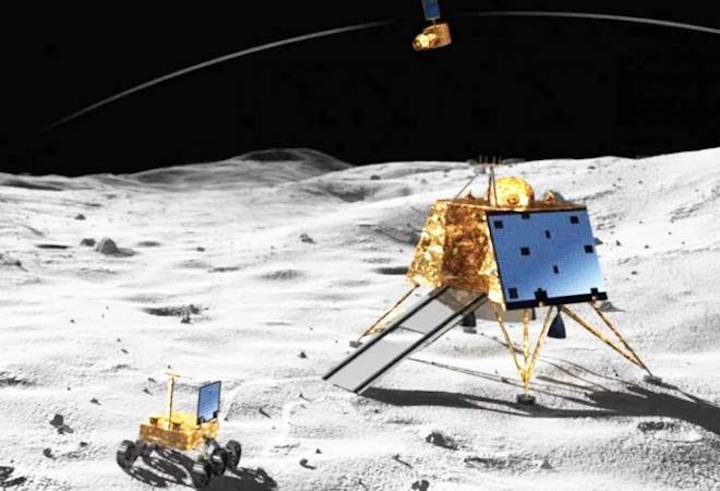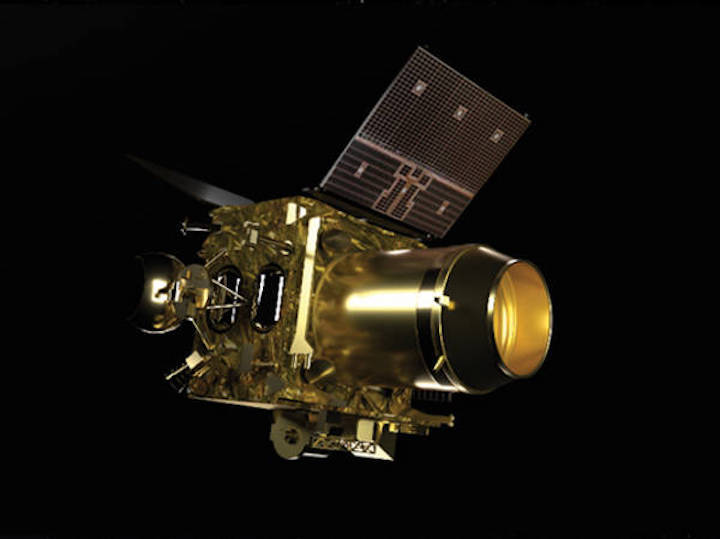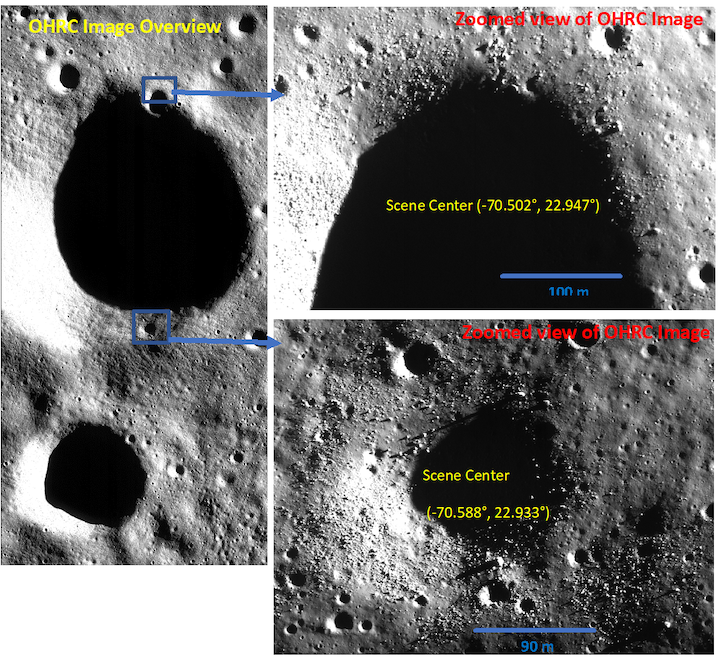23.07.2020
ISRO initially planned to release the report on major findings from Chandrayaan-2's science experiments at the Annual Lunar Planetary Science Conference in March this year

ISRO said that all eight payloads on Chandrayaan-2 are performing well and it has acquired extensive data from them
The Indian Space Research Organisation (ISRO) will start releasing data from Chandrayaan-2 for global use in October.
The space agency also informed that the global mapping of the lunar surface as well as polar coverage are being conducted as per the mission plan.
"Parameters are being derived for the presence of water-ice in the polar regions, X-ray based and infrared spectroscopic mineral information, and mid and high-latitude presence of Argon-40, a condensable gas on the Moon which gets released internally by the radioactive decay," it said in an official statement, reported IANS.
ISRO initially planned to release the report on major findings from Chandrayaan-2's science experiments at the Annual Lunar Planetary Science Conference in March this year.
However, the event got cancelled due to COVID-19, the agency added. The Chandrayaan-2 spacecraft was inserted into lunar orbit on August 20, 2019.
In September 2019, the spacecraft's Vikram Lander lost communication with ISRO moments before its scheduled landing on lunar surface. The lander, with rover 'Pragyan' tucked inside Chandrayaan-2, was just 2.1 kilometres above the lunar surface when it lost contact with the space agency.
On December 2, 2019, US space agency NASA found the lander on moon's surface after which it released the images of its impact site.
Quelle: BT
+++
Chandrayaan 2’s data release will include the highest-resolution 3D map of the Moon and information from its 8 high tech instruments

The agency announced it on Tuesday which marked the first anniversary of the launch of Chandrayaan-2, India's second moon mission.
It was on this day that India released the GSLV rocket, nicknamed 'Bahubali' from Sriharikota in Andhra Pradesh.
ISRO further said that all eight payloads on Chandrayaan-2 are performing well and it has acquired extensive data from them.

First anniversary of Chandrayaan-2 launch
Chandrayaan-2 marked one year of completion of launch by GSLV MkIII –M1 today. The Chandrayaan-2 spacecraft was inserted into lunar orbit on August 20, 2019. All eight payloads on Chandrayaan-2 are performing well. The global mapping of lunar surface and polar coverage are being carried out as per the mission plan.
Extensive data has been acquired from Chandrayaan-2 payloads and parameters are being derived for (i) presence of water-ice in the polar regions, (ii) X-ray based and Infrared spectroscopic mineral information and (iii) mid and high latitude presence of Argon-40, a condensable gas on the Moon which gets released internally by the radio-active decay of 40 K .
The report on the major findings from Chandrayaan-2 science experiments was planned to be released at the Annual Lunar Planetary Science Conference in March 2020; however due to COVID-19, it has been cancelled. Public release of Science data from Chandrayaan-2 for global use will begin in October 2020, wherein details for accessing the data will be provided.

OHRC image covering the region between Manzinus C and Simpelius N acquired on 2nd March 2020
OHRC has acquired 22 orbits images of lunar surface consisting of nearly 1056 sq. km area. It is also used to characterize landing sites for future missions.
Quelle: ISRO
+++
Chandrayaan-2 completes one year in space; all payloads performing well, says ISRO
The mission took off from the Satish Dhawan Space Centre in Sriharikota on July 22. The Chandrayaan-2 spacecraft was inserted into lunar orbit on August 20, 2019.
As India's Chandrayaan-2 mission marked the completion of one year of its launch by GSLV MkIII –M1, the Indian Space Research Organisation (ISRO) said on Tuesday all its payloads are performing well.
The mission took off from the Satish Dhawan Space Centre in Sriharikota on July 22. After revolving around the Earth's orbit for nearly 23 days, the craft began its journey to the moon on August 14. The Chandrayaan-2 spacecraft was inserted into lunar orbit on August 20, 2019.
A day before its launch anniversary, ISRO said all eight payloads on Chandrayaan-2 are performing well.
The global mapping of lunar surface and polar coverage are being carried out as per the mission plan, it said.
"Extensive data has been acquired from Chandrayaan-2 payloads and parameters are being derived for (i) presence of water-ice in the polar regions, (ii) X-ray based and Infrared spectroscopic mineral information and (iii) mid and high latitude presence of Argon-40, a condensable gas on the Moon which gets released internally by the radioactive decay of 40 K," the space agency said.
ISRO said the report on the major findings from Chandrayaan-2 science experiments was planned to be released at the Annual Lunar Planetary Science Conference in March 2020 but was cancelled due to COVID-19
Public release of Science data from Chandrayaan-2 for global use will begin in October 2020, wherein details for accessing the data will be provided, it said.
The Orbiter High Resolution Camera (OHRC) on board the orbiter has acquired 22 orbits images of lunar surface consisting of nearly 1056 sq. km area.
It is also used to characterise landing sites for future missions.
Even though ISRO contact with Vikram Lander, the Chandrayaan-2 mission achieved 98% of its objectives as the orbiter is doing very well.
The Vikram Lander successfully separated from Chandrayaan-2 Orbiter on September 2. The Lander Vikram was to soft-land on the far side of the moon at on September 7. Minutes before its scheduled soft-landing, the communication with Vikram Lander was lost. It was 2.1 km above the moon's surface when it lost contact with the ground stations.
Quelle: DNA
